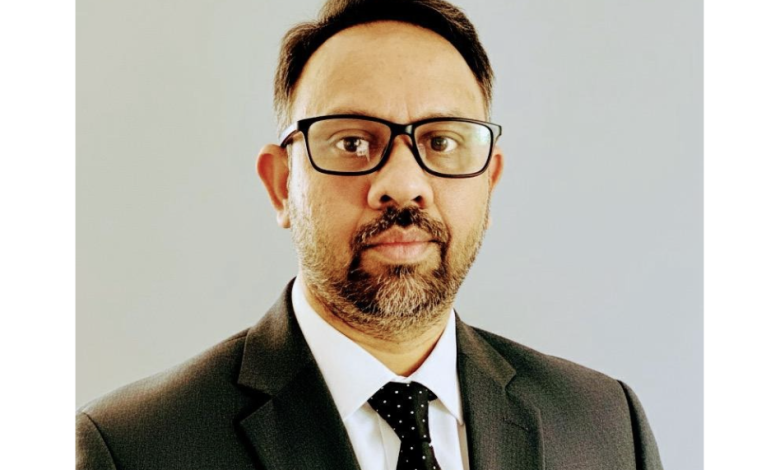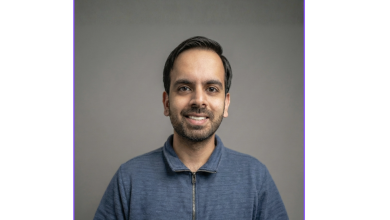
Within a world where enterprises live and die by their ability to make sense of information, Rohan Shahane has built a career turning raw datasets into a strategic advantage. As a Principal Data Architect specializing in cloud‑first, AI‑ready solutions, he sits at the intersection of technology and business, designing systems that not only move data but also empower organizations to think faster and smarter. Over the past decade, he has guided large companies and complex industries through transformative migrations, championed responsible artificial intelligence, and published award‑winning research that has pushed the field forward.
Rohan’s reputation in the data community was cemented when a leading global logistics company sought to overhaul its digital backbone. The firm’s existing platforms could no longer keep up with the milliseconds‑to‑millions demands of modern supply chains. Rather than perform a simple lift‑and‑shift to the cloud, Rohan spearheaded a cloud‑first data revolution that unified disparate systems into a single, intelligent backbone. Working as the Migration Architect, he envisioned a platform that would not only process massive volumes of logistics, inventory, and delivery data but also learn from it.
He led the creation of an enterprise‑wide Azure Data Platform using Databricks, PySpark, and Azure Data Factory. This architecture consolidated global data assets into a single lakehouse and enabled near-real-time analytics across warehousing, routing, and customer service. To ensure the system could adapt and improve over time, Rohan designed a Self‑Learning Smart Gen AI Chatbot using Azure Cognitive Services, the Azure Bot Framework, OpenAI’s GPT‑3.5 models, and the LangChain framework. Far from a simple chatbot, the platform offered real‑time order tracking, inventory forecasting, and predictive insights into potential delivery delays caused by weather or vehicle issues. The system leverages AI Guardrails for ethical decision‑making and uses Cosmos DB to store adaptive knowledge, allowing each interaction to make the bot more contextual and human‑like.
“It’s not about adding servers,” he told colleagues at the time. “You have to create systems that think, learn, and adapt—just like the people who use them.” To support this ecosystem, Rohan implemented CI/CD pipelines with Azure DevOps and Jenkins, integrated SonarQube for quality governance, and optimized costs through parallel PySpark frameworks and checkpoint recovery mechanisms. The results were dramatic: real‑time visibility into global operations, 70 percent faster data pipeline execution, and AI‑driven forecasting that reduced delivery delays and improved inventory planning. By modernizing governance with Unity Catalog and Azure Purview, Rohan ensured traceability, security, and compliance were baked into every layer. Industry peers now view the logistics company’s AI‑augmented platform as a benchmark for how smart architecture and responsible AI can transform legacy systems into living, learning ecosystems.
Success in logistics led a multinational financial institution to seek Rohan’s expertise for its own transformation. The company managed billions of transactions daily using a hybrid of on‑premises Hadoop clusters and Azure cloud services. While functional, the architecture struggled to deliver fraud detection and customer insights in near real time. Executives needed to understand fraud patterns and spending behaviors within seconds, not hours.
Rohan approached the challenge with a product design mindset. “Data architecture isn’t just about pipelines,” he said. “It’s about enabling intelligence, building systems that deliver answers when they matter most.” He designed a hybrid environment integrating on‑premises Hadoop with Azure Data Lake, Data Factory, and Snowflake. Adopting a data‑as‑a‑product model, he architected fraud and customer‑insight datasets as reusable, governed components. This modular structure allowed analytics teams to work independently yet cohesively, dramatically accelerating time to insight.
To meet the performance challenge, he engineered parallel ingestion and transformation pipelines using NiFi, ADF, and Python, capable of processing gigabytes of streaming data within seconds. Snowflake compute clusters were fine‑tuned for high‑concurrency workloads and elastic scaling, cutting query times by more than 60 percent. The architecture balanced speed with rigorous governance through secure access frameworks, audit traceability, and end‑to‑end data lineage. What once took hours could now be achieved in under two minutes, giving fraud analysts and business leaders the ability to act on insights as they happen. Today, that system stands as a blueprint for modern financial data platforms, one that blends the discipline of enterprise architecture with the agility of AI‑driven design.
Rohan’s impact extends beyond industry. A lifelong learner and researcher, he has published widely in respected journals and conferences, exploring themes ranging from self‑healing machine‑learning systems to quantum‑AI optimization. His paper “Training AI to Simulate Reality Through Self‑Constructed Representations” earned the Best Paper Award at IEEE Pune 2025 and introduced methods for letting AI models create adaptive simulations, a step toward self‑evolving, context‑aware AI frameworks. Mainstream news outlets, such as the Times of India and MSN highlighted that this paper (he co‑authored with Shazia Hassan, Nandita Giri, Sashi Kiran Kaata, and Vijayakumar Krishnapillai) was honoured at IEEE I2ITCON 2025 for its innovative approach to bridging the gap between AI learning and real‑world simulations
In “Autopilot AI: Architecting Self‑Healing ML Systems with Reinforcement Feedback Loops,” he investigated feedback‑driven models that autonomously correct anomalies in real time, echoing the resilience of biological systems. And with “Quantum‑AI Hybrid Algorithms for Solving Large‑Scale Engineering Problems Using LLM‑Driven Optimizations,” he proposed blending quantum computing and artificial intelligence to tackle complex data‑engineering challenges.
Other influential studies, such as “Improving ML Model Accuracy Through Data‑Centric Engineering in Enterprise Data Lakes” and “Design Patterns for Scalable ML Workflows in Azure Data Lake and Synapse Analytics,” underscore his emphasis on data quality, scalable frameworks, and operational efficiency. Beyond writing, he serves the research community as a session chair at international conferences and a reviewer for IEEE events. These roles allow him to shape standards of innovation and research integrity while mentoring the next generation of engineers.
Rohan’s path began with a simple question: How can data tell better stories if given the right structure? Raised amid the rapid evolution of technology, he felt that buzzwords often outpaced the substance of true innovation. Instead of chasing trends, he committed to mastering the “art of structure.” Over years of working across complex ecosystems, automotive, logistics, and finance, he learned that good architecture is the foundation of great solutions. As companies embraced artificial intelligence, Rohan saw that most were layering AI onto static models. He began integrating predictive analytics and machine‑learning pipelines directly into data frameworks, paving the way for real‑time risk management and forecasting.
His inspiration stems from the belief that data is not static; it carries a pulse of human decision‑making. “Every dataset tells a story,” he often said. “Our job is to listen and amplify that story into clarity.” Whether modernizing financial systems, building self‑scaling frameworks, or publishing research on quantum‑AI optimization, he remains driven by the intersection of data architecture and human insight. By merging engineering disciplines with responsible AI, he shows that technology can amplify rather than replace human potential.
The projects that defined Rohan’s career were not without challenges. At the logistics company, he discovered that decades‑old systems were built for batch processes, not real‑time demands. Data pipelines ran serially, and analytics couldn’t keep pace with customer expectations. Rather than patching old code, he reimagined the architecture with modular PySpark frameworks that support parallel execution and fault recovery. Weeks of processing became minutes, giving the business a level of agility that was previously unattainable.
At the financial institution, the challenge was balancing security and speed. Processing gigabytes of sensitive data in seconds while maintaining strict compliance required precision that few had achieved. Rohan’s solution, combining Snowflake’s elasticity with Azure’s data fabric and precision‑engineered pipelines, delivered executive reports in under two minutes, redefining how financial insights were consumed globally. Yet his greatest challenge wasn’t technical but cultural. Leading modernization meant leading change, and he navigated teams through uncertainty by building trust and creating frameworks that explained not just how to execute, but why transformation matters. His mantra, “Complexity is inevitable, but confusion is optional,” remains a guiding principle.
Through his journey, Rohan has learned that true innovation often emerges when things almost don’t work. At the financial institution, he found that speed without structure leads to fragility; at the logistics company, he realized that even the most advanced frameworks mean little without collaboration. He treats every project as a living system, one that learns, adapts, and grows with its environment. Equally important is the architect’s role as mentor and guide. “Architecture isn’t about building systems,” he reflected. “It’s about building confidence, confidence that what we create today will scale into tomorrow.”
As he looks to the future, Rohan envisions a world where data architecture becomes intelligence architecture. He is researching autonomous data ecosystems that combine reinforcement learning, large language models, and quantum optimization. These systems will anticipate business needs, optimize themselves in real time, and secure data through adaptive governance. He also believes in data empathy, understanding how information interacts with human decision‑making. “Technology should be intelligent enough to understand intent,” he said. “The future of architecture is not automation, it’s awareness.”
Beyond his own projects, he aims to mentor aspiring data architects to think systemically and ethically. He hopes to establish global frameworks where AI evolves with human values at its core. From optimizing real‑time financial insights to shaping the future of self‑healing AI, his journey continues toward one purpose: architecting a future where data not only informs decisions but inspires them.
Rohan Shahane is a distinguished cloud professional, enterprise transformation leader, and global technology contributor. He shares insights about Azure Data Architecture, cloud‑first strategies, data lakehouses, Synapse Analytics, Power BI, SQL Server modernization, data governance, and AI‑ready architectures. To learn more about his work or to collaborate on data‑driven innovations, connect with him on LinkedIn.




